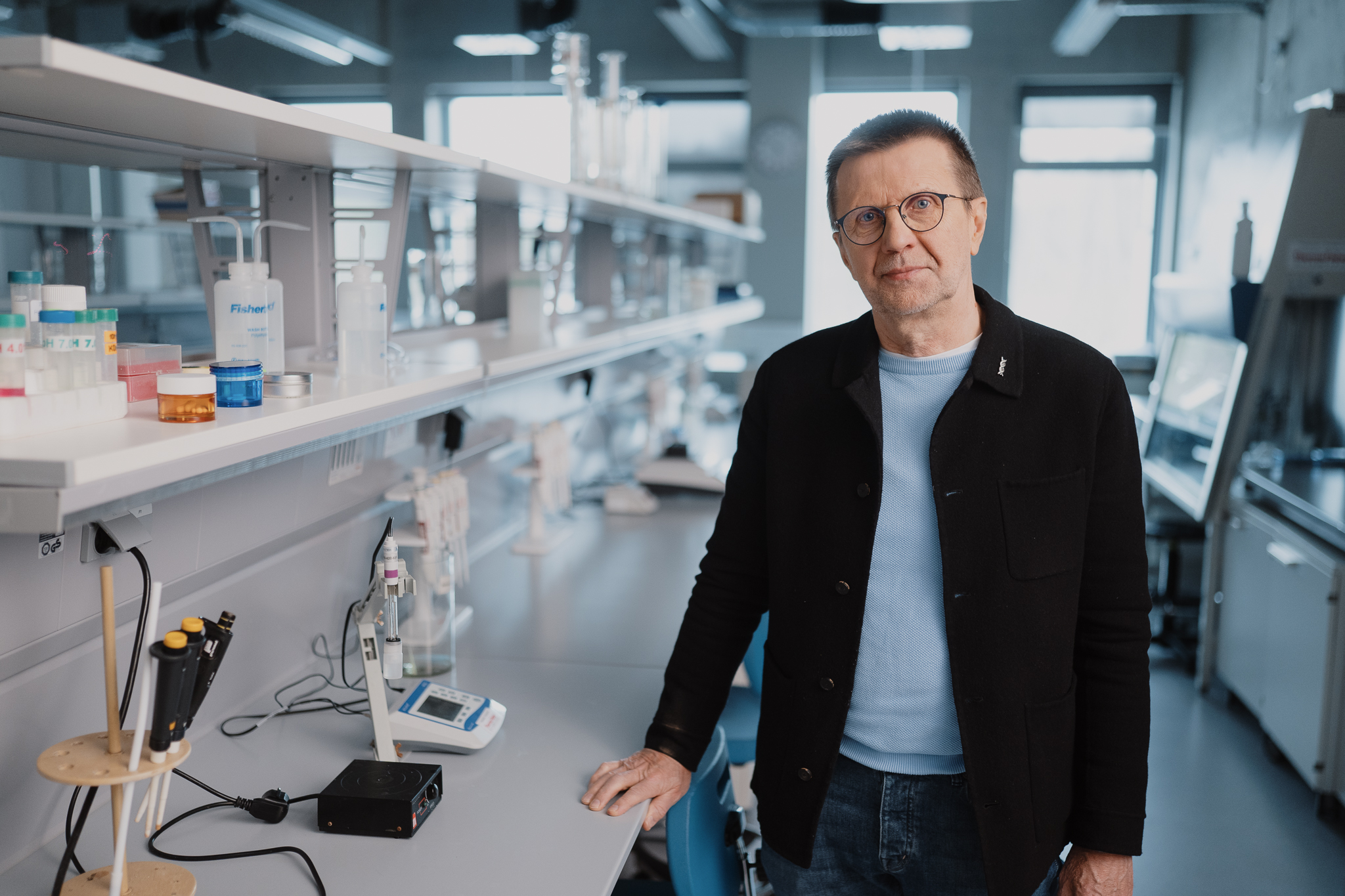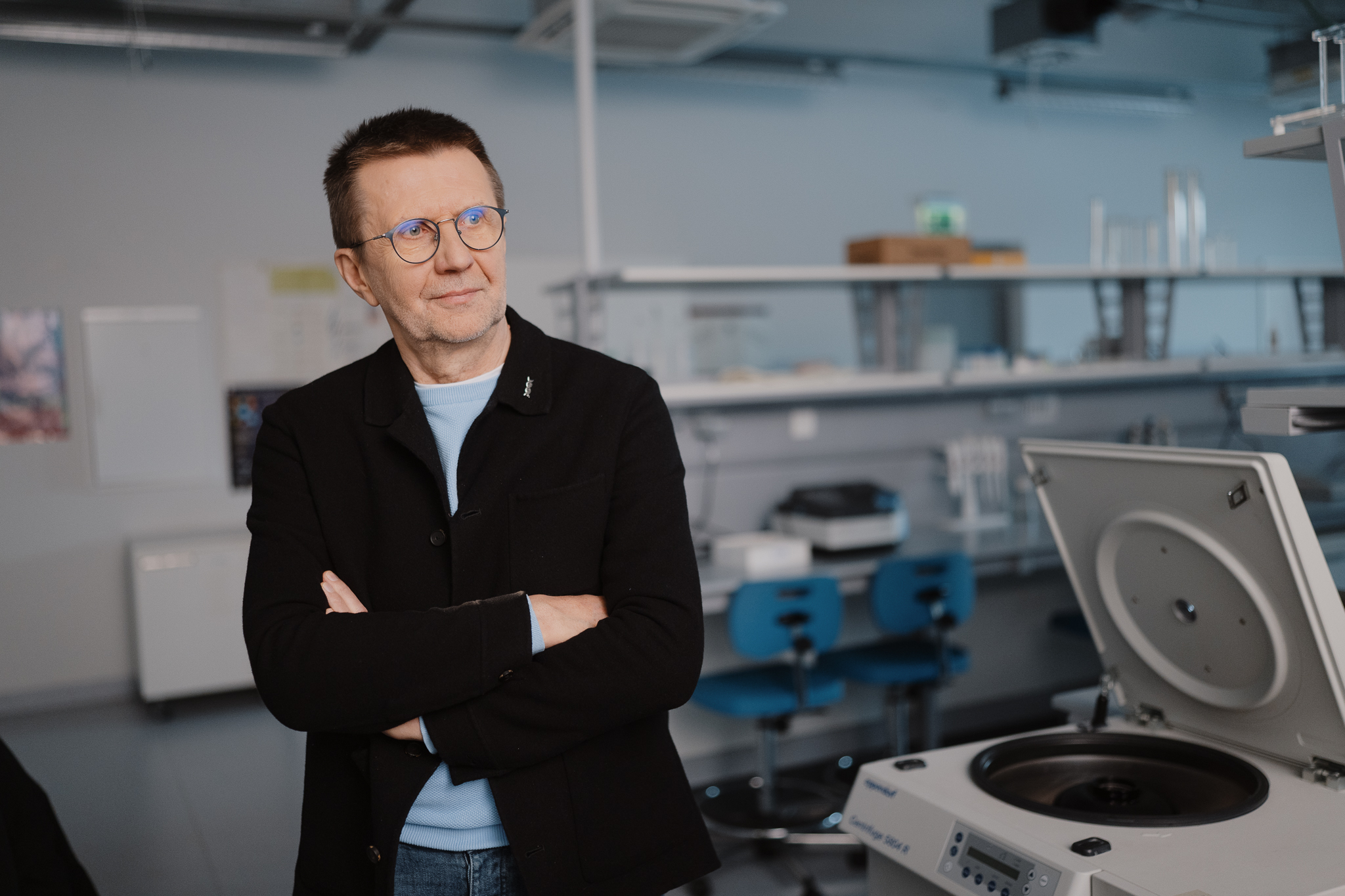Gene Therapy for Everyone: Will DNA Editing Be as Easy as Getting Vaccinated?

Imagine that the genetic information of each of us is like a library where hundreds of carefully written books store information on who we are: from eye colour to our predisposition to certain diseases. If even a single error appears in these books, it may lead to serious health issues. For a long time, correcting such errors was impossible. However, this changed with the advent of gene-editing technology. The gene-editing tool known as “genetic scissors”, discovered by Prof. Virginijus Šikšnys and his team from Vilnius University (VU), acts as a precise editor, allowing scientists to correct DNA errors much like editing a text on a computer.
The most interesting thing is that this technology, which won the Nobel Prize in 2020, was discovered in the search for answers to completely different scientific questions. This breakthrough came about by studying how the bacteria used in yoghurt production can fight viruses. This technology has now been adapted and is already being used to treat genetic diseases. Meanwhile, VU researchers continue to explore ways to make gene therapy faster, cheaper, and accessible to all. In the future, DNA editing may become the same kind of routine procedure as treatment with medication or vaccine administration.
Human DNA material takes up the equivalent of 200 books
When asked why science needed genetic scissors, Prof. Šikšnys explained that the answer lies in human DNA. It functions as a blueprint for life that encodes all the essential information: our physical appearance, health, susceptibility to disease, and even our character traits.
“Our DNA is like an extensive text made of only four “letters” – A, C, G, and T, arranged in extremely long and countless combinations. For instance, human DNA contains approximately three billion letters. If this genetic code were printed in book form, it would take as many as 200 books consisting of 350 pages each,” said the researcher.

DNA, just like a computer program, works flawlessly as long as there are no errors. However, as soon as malfunction occurs – whether due to natural mutations or inherited genetic defects – the normal activity of the human body may be disrupted, and a genetic disease may develop.
“Imagine having a vast DNA text spanning 200 books, but one error is lurking somewhere in the vast array of pages. The question arises: how could that error be found? Would we flip through page by page? How long would it take to find that error, and once finally found, how could we correct it in the already printed text?” the Professor asked rhetorically.
Researchers have long been searching for ways to detect and correct these errors in the human genome, but so far, they have not had the necessary tools to do so.
Genetic scissors – discovered in a yoghurt pot?
Prof. Šikšnys admits that if someone had set out expressly to find a gene-editing tool, it would probably have been unclear where even to begin looking. This is why the most significant scientific discoveries often come not from targeted searches but rather from an attempt to understand the world around us and to find answers to common scientific questions.
“This is exactly what happened in this case. The researchers were tackling a problem faced by the dairy industry: bacteria are essential for cheese or yoghurt production, and like humans, bacteria are also attacked by their deadly enemies – viruses. Picture this: the bacteria in the starter culture for the industrial production of yoghurt are suddenly attacked by a virus; they die, so the yoghurt production process breaks down, resulting in the whole product going to waste. Such a scenario would cause huge losses to the industry. To prevent this, researchers started looking for ways to solve this problem, i.e., how to protect the bacteria used in yoghurt production from viral attacks,” said the biochemist.
According to the Professor, in 2007, French researchers discovered an interesting mechanism – CRISPR – for protecting bacteria from viruses. They noticed that bacteria store fragments of viral DNA in their genome and can recognise and destroy the virus the second time it attacks.
“When reading these studies, I began to wonder how bacteria do this. Could this mechanism work in any other genome? Thus, I wrote a letter to the French researchers, asking them to share samples of the bacteria we were interested in exploring in more detail,” recalled the Professor.

Genetic scissors as a text-editing tool
When these bacterial samples arrived at the laboratory of Prof. Šikšnys at the VU Life Sciences Center, researchers began studying their viral defence system (CRISPR). They discovered that, in some cases, one specific protein protects those bacteria from viruses.
“Our research has shown that bacteria use a special protein called Cas9 to defend themselves against viruses. It acts like “genetic scissors” that recognise and cleave the DNA of the virus, thus neutralising the threat and destroying it. This is because bacteria retain a fragment of the virus’s DNA in their genome as a memory. This fragment is then converted into an RNA molecule that binds to the Cas9 protein and becomes the “address” that recognises the virus-attacker’s DNA, and then the Cas9 protein destroys it. This means that Cas9 is “programmed” with the help of an RNA molecule: after changing RNA, it travels to another specific part of the DNA and cleaves it. Thus, the ‘genetic scissors’ can be directed to any part of the DNA, such as the bit containing the error responsible for hereditary genetic disorders. This way, we can accurately edit genetic information with the help of genetic scissors, much like we correct text errors using a computer editor,” explained Prof. Šikšnys.
In 2012, VU researchers described their findings in an article published in the journal “Proceedings of the National Academy of Sciences of the United States of America”, demonstrating that Cas9-mediated DNA cleavage could be used for programmable genome editing. This discovery paved the way for unprecedented precision in genetic modification.
Who were the first to discover genetic scissors?
In 2012, genetic scissors were discovered independently in at least two university laboratories worldwide. Naturally, there was a question of who had discovered them first.
As the Professor says, determining priority in scientific discoveries is not always straightforward. When researchers complete a study, they submit an article to the editorial board of a scientific journal, which records the date of its submission. If the article is worthy of consideration, it is sent to reviewers. After receiving their comments, the researchers make any necessary amendments to the text, and another important date is then recorded – the time of its acceptance for publication. Finally, the third date indicates when the article is finally published.
“When establishing scientific priority, the date when the article is submitted to the editorial board is often considered to be the most significant since it marks the moment when the study goes beyond the laboratory,” said Prof. Šikšnys.
However, some believe that the date of publication is the decisive factor. Thus, the question of who first discovered the genetic scissors remains open. The article by VU researchers describing the genetic scissors technology was the first to reach the editorial boards of international scientific journals, even though it was published later than similar studies by those who went on to win Nobel Prizes for their work.
Approved therapies for treating genetic diseases
This very technology of genetic scissors has become one of the most important scientific breakthroughs of the last decade – it is now being applied and has already begun entering clinical practice. Several years ago, two therapies were approved in the US to treat sickle cell anaemia and beta-thalassemia – two blood disorders caused by mutations in the haemoglobin gene. “Modern gene therapies that have already reached clinical practice are mostly based on what are known as ex vivo methods. For example, during the treatment of sickle cell anaemia, bone marrow stem cells, which produce red blood cells, are extracted from the patient. At the laboratory, researchers eliminate the error in the DNA of these cells and reinfuse these genetically edited cells into the patient,” the biochemist described the treatment process.
According to him, this is a complex, costly, and lengthy process – cells need not only to be removed from the human body but also to be multiplied, and genetic changes must be made, all of which must take place under strictly controlled laboratory conditions to avoid infections or other complications.

“This treatment cycle may last for about a month or even longer, but some patients with severe forms of the disease cannot wait this long,” Prof. Šikšnys said. With this in mind, gene therapy is constantly being improved to make it faster and more accessible.
Genes can be cut, muted, or activated
Scientists are further developing genetic scissors; in addition to cutting or replacing the damaged part of the DNA, they can also mute and activate certain genes. So, how does it work? For example, in sickle cell anaemia treatment, it is possible to activate the version of the haemoglobin gene that was active in infancy but was later naturally disabled.
“If the haemoglobin gene in adults has a mutation, we can activate the haemoglobin gene that was active in infancy but has been gradually suppressed naturally. In this way, the human body starts producing natural, error-free haemoglobin, allowing patients to avoid the symptoms of the disease. This therapy is already in clinical trials,” explained Prof. Šikšnys.
The technology for “muting” genes allows and temporarily stops the activity of certain genes. “If we just want to deactivate the gene temporarily, we can use a modified Cas9 protein that will not cut the DNA chain but will only connect to the desired part and prevent the cell mechanisms from reading the wrong genetic information. This allows for a more subtle regulation of gene activity, without irreversible changes to DNA and avoiding possible damage in healthy areas of the genome,” the Professor clarified.
How is gene-editing technology evolving?
According to the Professor, one of the key avenues of research currently being explored is the use of genetic scissors on human tissues or organs to correct DNA errors directly in the human body. This approach could make disease treatment significantly faster and cheaper. One of the major challenges is ensuring that the gene-editing tool reaches only the required cells without affecting the entire body.
“There are trillions of cells in the human body. If we want to correct an error, say, in the cells of the liver or heart muscle, we must ensure that the tool does not enter other tissues. Currently, we are looking for ways to precisely target the direct editing mechanisms to the cells of specific organs,” said the scientist.

One possible solution involves methods similar to those used in RNA vaccines, where the active substance is encapsulated into particles that deliver it to the required organ. Another approach under investigation is the use of adenoviruses, which are harmless to humans. However, they are too small for the regular large gene-editing tools to fit there. To address this, VU researchers are looking for smaller and more efficient alternatives.
“There are many Cas9-like proteins, and our team has already identified several variants three times smaller than regular gene-editing tools,” remarked the Professor.
In the future, gene therapy can become not only more precise but also more accessible. According to Prof. Šikšnys, gene-editing therapies are currently very expensive. “However, if we learn to edit genes directly within the human body, this therapy could become a routine treatment method widely used in medicine.”